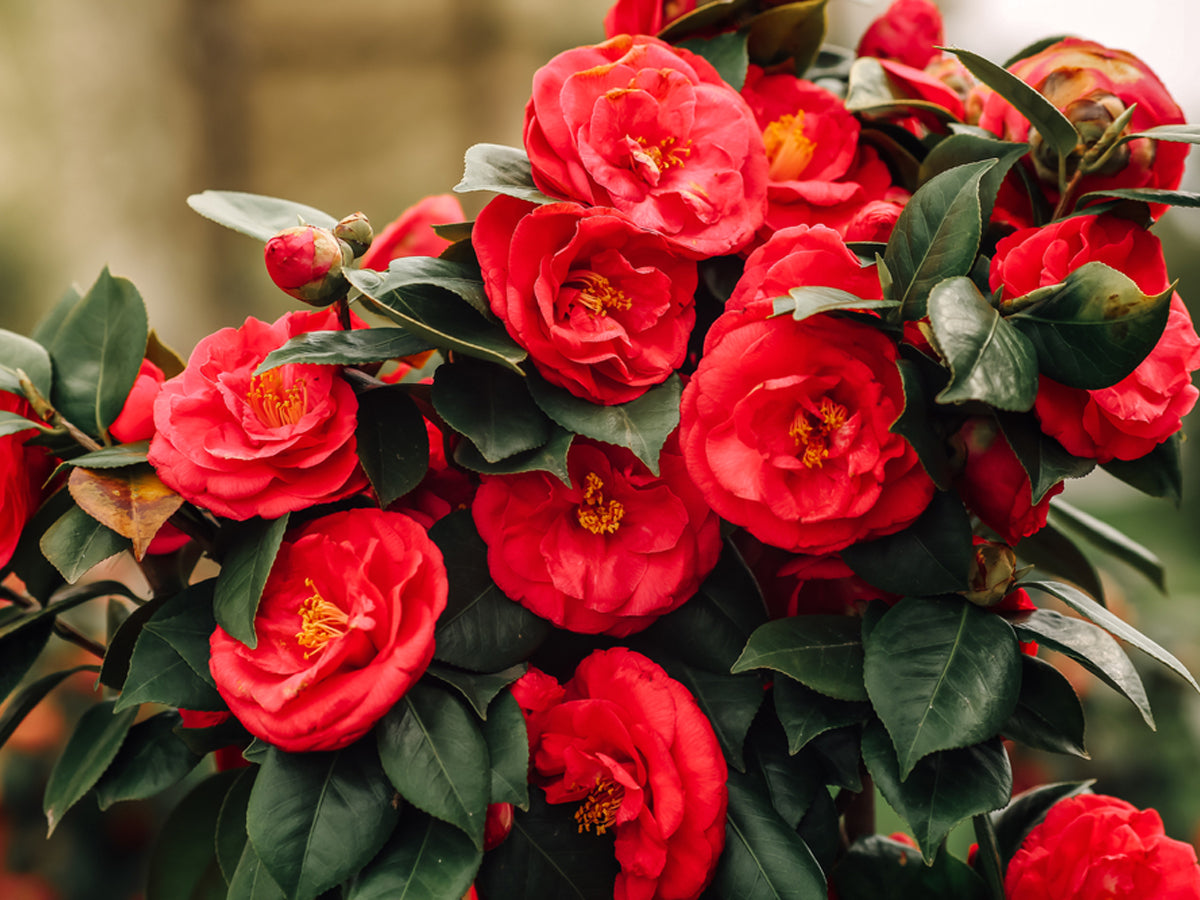How to Grow
Autumn Flowers: Must-Have Fall Flowers for Your September-November Garden
Without falling there is no rising up, without ending there is no beginning….isn’t it?
The time from September to November is called "fall" because most trees shed their leaves at this time of the year. Some cite this incident as tragic while others call it “transformation.”
Summer draws its line, and winter is about to start its innings, making the weather much more bearable, cozy, and comfortable.
Like us, some of our green friends love to show their best blooms at this time. With their rich colors and unique textures, autumn flowers can add a touch of warmth and beauty to any space.
In this blog, we have curated a list of some of the most stunning autumn flowers in India that are sure to make your garden stand out from September to November. We will cover the following aspects: -
- Salient features of autumn season in India
- List of autumn season flowers growing in India
Let’s start discovering the autumn season and its flowers.
Salient Features of Autumn Season in India
- The autumn season in India typically lasts from September to November.
- The weather during autumn is characterized by clear skies, low humidity, and comfortable temperatures.
- Many popular Indian festivals, including Navratri, Durga Puja, and Diwali, take place during the autumn season.
- Agriculture is a significant aspect of autumn in India, as it marks the beginning of the harvest season.
- Autumn in India is known for its vibrant foliage colors, with leaves turning shades of red, yellow, and orange.
- The tourism industry thrives during autumn, as many tourists flock to India to witness the vibrant autumn foliage and participate in various festivals.
- Autumn is also a popular season for outdoor activities such as hiking, trekking, and camping, as the weather is mild and pleasant.
List of Autumn Flowers Growing in India
Camellia
The camellia is an evergreen shrub that produces dark, glossy leaves and abundant, attractive flowers that last for a few weeks during fall through early spring. It is native to East Asia (Japan, China, and Korea) and comes in red, pink, white, and yellow colors. They are mostly known for their ornamental value but camellia oil is known for various skin benefits like repairing age spots.
Care Tips:
- For optimal growth, camellias need soil that is rich, moist, and well-drained with a pH of 6.0 to 6.5.
- Part shade or areas that receive intermittent sunlight throughout the day, particularly in the lower layers of tall, airy trees, are ideal for camellias to flourish.
- Maintain consistent moisture levels by watering them regularly because insufficient watering can lead to decreased flower production and fewer petals. Water twice a week and an inch of water per week is ideal.
Cymbidium orchids
Cymbidium orchids are native to tropical and subtropical regions across Asia, Australia, and the Pacific Islands. These orchids have large and colorful blooms that come in white, pink, green, and purple shades. Also, the long, thin leaves make the plant more beautiful. Boat orchids or Cymbidium orchids flower from autumn to spring and are great for indoor or outdoor gardens.
Care Tips:
- For indoor gardening, choose a southeast or east-facing window, as Cymbidium orchids thrive on filtered light. For outdoor gardening make sure after the morning sun, it gets afternoon shade.
- A rich, loose, organic potting mix with a pH between 5.0 and 6.0 is ideal for growing boat orchids.
- During the spring, summer, and fall seasons, keep watering this plant adequately with filtered water.
Gerbera Daisies
Gerbera daisies, also known as African daisies or Transvaal daisies, are a stunningly vibrant and colorful variety of flowers that are native to South Africa. These flowers are renowned for their large, daisy-like blooms that come in a range of bright colors, including red, yellow, orange, pink, and white. Most floral arrangements carry this flower for its cheerful appearance.
Care Tips:
- Regular watering of around one inch per week is good for growing gerbera daisies. It needs more water during the summer than in the winter. So, check the soil before watering.
- A well-draining soil that is nutrient-rich and high in organic matter with a pH level between 5.5 and 6.5 is ideal for gerbera daisies.
- They prefer full sun but cannot tolerate excessive heat. So, after the morning sun, this plant would need some shade. Also, avoid planting near any surface that reflects heat, such as a stone wall or foundation.
Hibiscus
Hibiscus is a flowering plant native to tropical and subtropical regions of the world. It is known for its large, colorful flowers that come in shades of red, pink, orange, yellow, and white. Hibiscus is used in traditional medicine to treat various ailments, including high blood pressure and digestive issues. It is a great addition to both indoor and outdoor gardens.
Care Tips:
- Hibiscus is a thirsty plant and won’t produce blooms if proper watering is not provided. It requires 1-2 inches of water every week and almost every day.
- If you are planting in a pot, opt for a potting mix with good drainage. If planting outside directly in your garden, enrich the garden soil with organic matter beforehand. The soil pH should be between 6.5 and 6.8.
- Make sure there are no tall trees or building structures guarding the sun because hibiscus, being the typical tropical plant, requires 8+ hours of direct sunlight.
Iris
With over 300 species and numerous hybrids and cultivars, the genus of flowering plants known as the iris is extensively cultivated. The delicate, intricate blooms on this plant, come in a variety of hues like white, pink, blue, purple, and yellow. The essential oil and perfume industries use this flower.
Care Tips:
- Allow five to six hours of sunlight and some shade for iris plants.
- A well-draining soil with a pH between 6.0 and 6.8 is ideal for growing iris flowers.
- Regularly, water iris plants deeply because they require both moist and well-draining soil.
Rose
Roses, scientifically known as Rosa, are a genus of perennial flowering plants in the family Rosaceae. These highly valued ornamental plants are popular for their beautiful, fragrant flowers, which come in various colors, shapes, and sizes. Apart from garden plants, roses are grown for cut flowers, essential oils, and perfumes too.
Care Tips:
- Deeply water roses twice a week and do not water in the evening.
- A loamy, well-drained soil with a pH between 6.5 and 6.8 is ideal for roses.
- Six hours of morning sun with afternoon shade is essential for growing roses.
Salvia
Salvia, also known as sage, is a genus of flowering plants that belongs to the Lamiaceae family. These plants are native to North and South America, Asia, and the Mediterranean. Salvia plants have medical, culinary, and cosmetic uses.
Care Tips:
- Salvia is not picky about soil, but the ideal one is well-draining, fertile, loamy soil. The ideal soil pH is between 5.5 and 6.5.
- Salvia is a thirsty plant and loves adequate watering, but do not let the water become stagnant.
- Six to eight hours of sunlight are essential for the growth of sage.
Snapdragon
Snapdragon is a popular flowering plant known for its brightly colored, showy flowers that resemble the shape of a dragon's head. Native to the Mediterranean region, these plants are widely cultivated in gardens and sold as cut flowers worldwide. They have narrow, lance-shaped leaves and tall spikes of flowers that bloom from spring to fall.
Care Tips:
- One inch of water every week is essential for a healthy snapdragon plant.
- Snapdragons prefer nutrient-rich, well-draining loam with a pH balance of 6.2 to 7.0.
- These flowers bloom best in full sun to moderate shade.
Sweet Pea
The sweet pea is a popular annual climbing plant known for its delicate, fragrant flowers. It is native to Italy and the eastern Mediterranean region. They are famous for their vibrant blooms, whose colors vary from soft pastels to bright hues. They are often used in bouquets and, for their sweet fragrance, in perfumes.
Care Tips:
- Sweet peas love moist soil. So, in the growing season, keep the soil moist. Weekly watering is enough, but also check an inch deep before watering.
- Although they do well in a location with some afternoon shade in warmer climes, sweet peas prefer the full sun.
- Sweet peas love rich, well-drained loam soil with a pH of around 7.5.
Tulip
Tulips are iconic flowers that originated in Central Asia and became wildly popular in the Netherlands during the 17th century. People love tulips for their striking, cup-shaped blooms and wide range of colors. Besides beauty, tulips also have medicinal and cosmetic uses.
Care Tips:
- Tulips of all varieties enjoy direct sunlight. However, keep in mind that in the early spring when tulips are actively growing, places under deciduous trees that are shady in the summer are mostly sunny.
- Rich, well-draining soil with a pH between 6.0 and 7.0 is ideal for tulips. Compost can help with drainage and give the bulbs nutrition
- If your area receives rainfall once a week or every two weeks, it is unnecessary to water your tulips. However, in dry regions, it is advisable to water them every two weeks.
Zinnia
Zinnia is a popular choice for gardeners due to its vibrant blooms. It is native to Mexico and South America. Zinnias are hardy annual plants that can thrive in a variety of growing conditions, making them an excellent choice for both novice and experienced gardeners. Besides beauty, they also attract pollinators like bees and butterflies, so they are a valuable addition to any garden.
Care Tips:
- Full sun is what zinnias love the most. They produce the best blooms under the sun.
- Zinnias generally require an inch of water every five to seven days. Always water the soil to a depth of about 6 inches.
- When it comes to soil, it is reasonably adaptable, but for the best results, use humus-rich soil that doesn't retain a lot of water and has a pH balance between 5.5 and 7.5.
We hope you are inspired to bring some of these flowers home for the autumn season and augment your indoor or outdoor garden. There is no greater joy than working hard in your garden and seeing it produce dazzling blooms.
Happy gardening!
FAQ’s Related to Autumn Flowers for Your Garden
Which are the most popular autumn season flowers in India?
Some popular autumn-season flowers in India include marigolds, chrysanthemums, salvia, zinnias, dahlias, petunias, sunflowers, cosmos, celosia, and pansies.
Can you name some flowers that bloom in September in India?
Here are some Indian flowers that typically bloom in September: Dahlia, zinnia, marigold, salvia, sunflower, etc.
Which autumn season Indian flower can I grow indoors?
Chrysanthemums, salvia, zinnia, marigolds, cosmos, petunias, and portulaca are some of the Indian autumn season flowers that you can grow indoors.
Are there any special instructions for flower care during the autumn season?
Don’t forget to water your flowering plant as the weather is getting cooler. Your plants still need water, so check when the soil is dry to water. Autumn is the best time to fertilize your plants and prepare them for winter. But the most important care routine to follow is deadheading, which is the process of removing any dead or faded blooms regularly to encourage your autumn flowers to bloom for a longer period. Finally, using a layer of organic mulch, such as shredded leaves or bark, around the base of your plants can help retain moisture, regulate soil temperature, and prevent weed growth.



